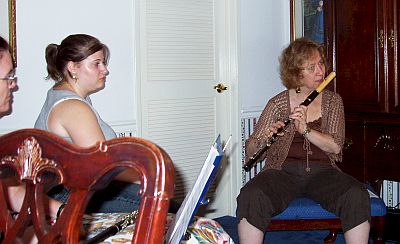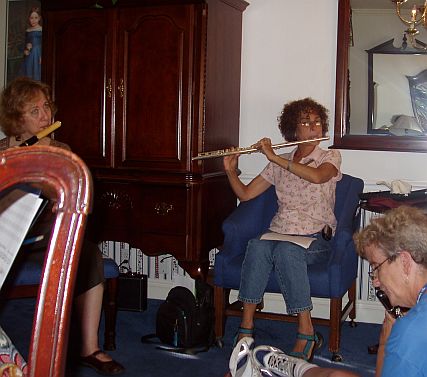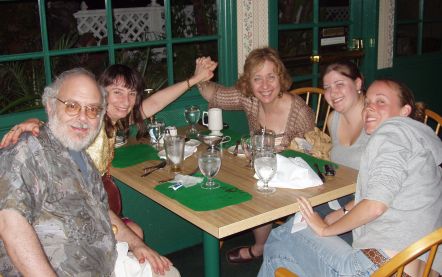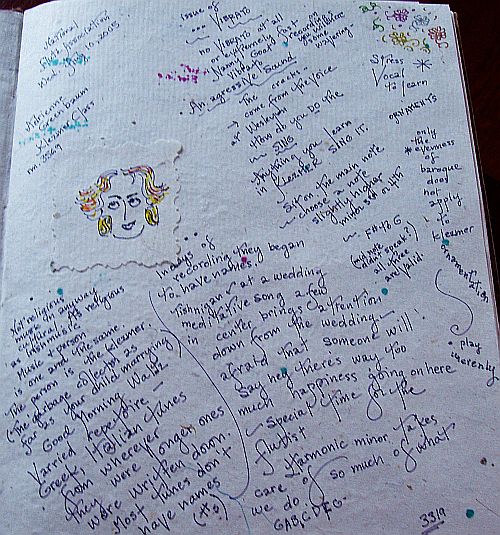Adrianne Greenbaum Hosts an In-Room Klezmer Workshop
The photo "captions" are mostly paraphrases by Kathy of comments Adrianne made during the session.Note: From the late 19th century klezmer flutists would have used the common flute of the time. That flute was a wooden, simple system flute, sometimes with an ivory head-joint.

Klezmer is Eastern European Jewish music for the wedding and other functions. klezmer music is not religious in any way. It is a cultural expression. It's history is known back to the 16th century from woodcuts and writings. More current knowledge comes from writings recordings, and some actual sheet music from research beginning in 1935.

To learn how to play klezmer: Sing everything you learn. That is the way to learn the "krechts" and other ornaments. (On the left above is Adrianne's daughter, Rebecca Provodator, also a flutist, listening at the workshop.)

While klezmer is characterized by bending and inflection of the notes, the farther back in its history, the less ornamentation. Adrianne believes strongly in the melody speaking its own voice, rather than overdoing the ornaments and bends of the tone. On the issue of vibrato in klezmer: Adrianne recommends no vibrato, or VERY very fast, or a combination, plus using some finger vibrato/vibrati.

The "klezmer"(one who plays) and the music is one and the same. (Above is our friend Harry Bernstein, who attended the session.)

In klezmer, the focus is on the melody. At weddings the "Doyna", rich in improvisation, would be a special moment for the flutist. Other listening tunes were the dobriden and tish nign.

Adrianne's "favorite pose"!
(A hug and head to head with her daughter.)
They were happy to have some time together in San Diego. Adrianne lives in the Connecticut, while her daughter studies flute, a junior at USC.) They look ready to do a celebration klezmer dance! Dance forms are Bulgar , Sher, Skocne, Dobronosh, Freylekhs, Hora, Shiba, Gasn Nign, Volekh, Waltz.

After the session, a happy dinner with friends at Kelly's, a fine restaurant at the Town and Country convention location. This was our first meeting with Adrianne, and we felt like old friends. We also enjoyed meeting Rebecca, and Laura Patterson, Rebecca's friend, a senior at USC. We are hoping they both will visit us, since they are not too far away. Laura teaches flute at the Old Town Conservatory of Music in Pasadena!
***********************************
Notes to the Session
klezmer =Vessal; Zemer=Song

